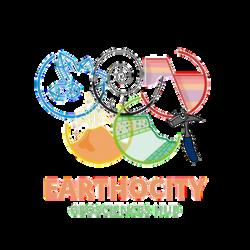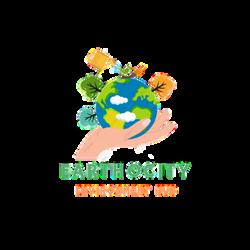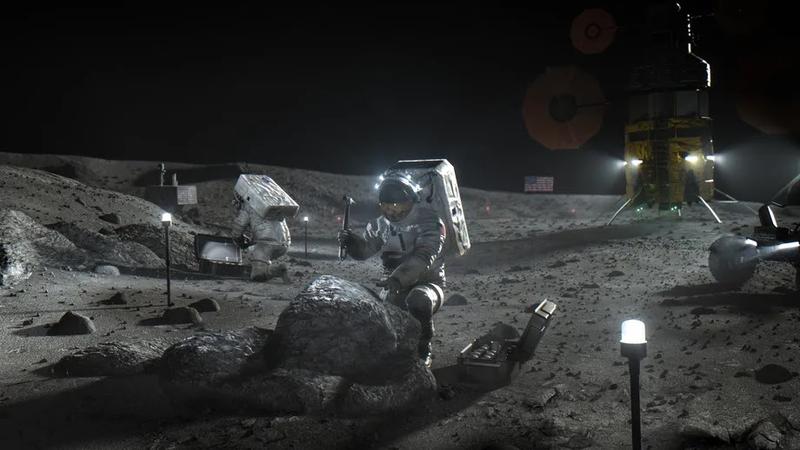6 MARCH 2023






















6 MARCH 2023






















In our science magazine, we focused much on the new discoveries and hidden treasures of the earth. Our findings include the domain of earth sciences, space sciences, energy sciences, marine biotechnology, ocean sciences, environmental and climate changes. We adopted the strategy to introduce this to the students and others. So we are on our way to this scientific journey. This issue of the magazinebroughtsomenewinsights.TheIssuealso highlightstheempowermentoffemalesinstemand also encourages the young emerging students to workondifferentarticlesofthemagazine. TalalAhmed



I am a biotechnologist who hopes to thrive in the biotechnology research community and make a valuable contribution to the organization. For the benefit of cancer patients, I have been serving as a student ambassador for the Shaukat Khanam Memorial Research Center and Hospital. My heart goes out to the nature and people of my country. I wish to see Pakistan flourish in every aspect and hope to leave a lasting impact on this society.

The effects of Earth’s continued warming will be severe Wildfire occurrence is likely to increase in the future with increased length and intensity of tropical storms, drought in some areas, and increased frequency of wildfires
The emissions of greenhouse gases increase the trappings of heat which is responsible in changing the climate of Earth. This is a bad impact on our surroundings and environment. Melting of glaciers and sheets of ice, ice of river and seas is breaking up earlier nowadays, living species like animals and plants are altering and suffering Trees and flowers are also affected due to climate change
Most important, heat waves have been suffered by people due to the effects of global warming
Burning fossil fuels for the purpose of electricity are the cause of emissions of the world which is very significant portion. Industrial and manufactural states cause emissions and responsible for the production of fossil fuels to make energy
These are serious environmental issues that are responsible for the alternative of our climate Industry plays an important role in global warming to greenhouse emissions When we cut the forests for farms and shelter, the carbon that is stored is released because trees are cut down. Deforestation and agricultural land also reduce the emissions of greenhouse gases. In result of greenhouse gas, transport companies have produced high amounts of carbon emissions Half amount of electricity have been used in residential areas and in large buildings. Naturalproducts like coal, oil and gas are used in living places for the purpose of heating and cooling and cause a large amount of greenhouse emissions.

The surface temperature of the earth is increasing along with the concentration of greenhouse gases Almost all land areas are experiencing hotter days and heat waves. These storms destroy cities and homes and cause riots. Rising temperatures exacerbate heat-related illnesses and make working on the other side difficult. In the case of cyclones, hurricanes, and typhoons, warm seawater is the main food source. Destructive storms are increasing in intensity and frequency in many areas. Rising temperatures will evaporate more water, exacerbating very heavy rainfall and flooding, leading to more severe storms.
Climate change is altering water supplies and water is scarce in many places
Global warming is exacerbating water scarcity in already dry regions Global warming is responsible for agricultural droughts, which affect our crops and make our ecosystems temper. In addition, droughts are responsible for severe dust and dust storms
Climate change is endangering people and animals on land As temperatures rise, so do these risks Little bit species that can migrate and survive, but all cannot Poverty and malnutrition are on the rise due to many factors, including climate change and increased extreme weather events. Crops, livestock and fisheries may be less productive or lost. Heat stress can reduce available water and rangeland, reduce crop yields, and affect livestock.
The greatest threat to human health is climate change. Air pollution, disease, extreme weather, forced migration and climatic stress are already having a negative impact on people’s health
Solutions
Fossil fuels are meant to stay underground Spend your money on green energy. Switch to eco-friendly transportation Increase farming and promote vegan food. Restore nature to increase carbon uptake Save the Amazon and other forests and oceans. Should consume less.

I am a biotechnologist who hopes to thrive in the biotechnology research community and make a valuable contribution to the organization. For the benefit of cancer patients, I have been serving as a student ambassador for the Shaukat Khanam Memorial Research Center and Hospital. My heart goes out to the nature and people of my country. I wish to see Pakistan flourish in every aspect and hope to leave a lasting impact on this society.

In terms of flood damage, Pakistan ranks ninth in the world In the summer of 2010, the Khyber-Pakhtunkhwa province in northern Pakistan received more than 312 mm of rain in a span of 56 hours. Over 1 600 people died as a result of this in the region Additionally, this unprecedented downpour directly impacted almost 14 million people. The spread of infections is facilitated by the optimal breeding grounds for pathogens found in flood-affected areas Another factor in this is the subpar hygiene conditions in the camps built to house those affected by the floods
Floodwater stagnant pools make perfect habitats for bacteria that cause diarrhea and other waterborne diseases. Cholera has been verified to be on the rise in Swat, and Scabies, cholera, and diarrhea cases have already been documented. Water and vector-borne illness epidemics have been linked to flooding. After floods, water pollution is thought to be the main factor contributing to epidemics of water-borne diarrhea.
This is a result of the sewage disposal and purification systems failing The transmission of diarrheal diseases, however, may also be influenced by secondary consequences of floods, such as crowding and consequent fecaloral dissemination of gastrointestinal pathogens

Among flood survivors, respiratory infections are frequently one of the main causes of morbidity and mortality The risk of respiratory tract infections is raised due to lack of shelter, exposure to flood waters, and rain There have been 113 981 cases of infectious respiratory tract reported in Pakistan communities where flood comes. Patients have viral flu, pneumonia, asthma, allergic bronchitis, and chronic obstructive pulmonary disease (COPD). In addition, the majority of them run the risk of developing secondary illnesses if suitable safeguards aren’t taken
Natural disasters place additional strain on Pakistan’s already inadequate water and sanitation systems In these circumstances, germs that come from human and animal waste with cycles of feck-oral transmission frequently contaminates water supplies. These have the ability to cause viral hepatitis, diarrhea and dysentery There is a risk that

Due to widespread agricultural techniques, large irrigation networks, and monsoon rains, Plasmodium vive and Plasmodium falciparum are both widely dispersed throughout Pakistan. Infectionsof skin and eyes are frequently happen as a result of direct meetings with polluted water. These infections include conjunctivitis, dermatitis, and infections of wound. The present floods have resulted in an estimated 143 870 infectionof skin being ted in permanent and unlimited of medications in Sindh’s southern but generally speaking, these diseases are not recognized to be rivers of major epidemics. These ly rank as the third most typical disease, behind respiratory infections e diarrhea
 Figure 2 shows Pakistan flooding destroyed health centers, will exacerbate disease outbreaks.
Figure 2 shows Pakistan flooding destroyed health centers, will exacerbate disease outbreaks.
Floodwater contamination can result in:
Infected wounds
A skin rash
Disease of the digestive system
Leptospirosis and tetanus (not common)
No matter where the pollution is coming from, it is crucial to take precautions against exposure to floodwater Staying out of the water is your best line of defense. If floodwater comes into contact with you As soon as you can, wash the area with soap and fresh water. Use alcohol-based wipes or sanitizer if you don’t have soap or water. Take care of cuts and, if required, seek medical attention. Before reusing clothing that has been exposed to flood or sewage water, wash it in hot water with detergent If necessary, put on rubber boots, rubber gloves, and goggles before entering floodwaters

Graduate of Biotechnology. Highly interested in the field of genetics and cancer research. She wants to pursue her career in cancer genetics. She participated in different biological conferences and also involved in volunteer activities during her degree program. She is currently an Internee in the Public Health Department at National Institute of Health (NIH), Islamabad.

Cancer is defined as the uncontrolled division of cells Cancer is one of the leading causes of death all around the world. As a result, it increases the economic and social burden on every country. Genetic mutations are mostly responsible for cancer development These mutations rise due to excessive use of xenobiotic and progressive industrialization in present world Mutations in genome can either turn-on the oncogenes or may turn-off the oncogenes Most Common treatment options include chemotherapy, radiation therapy, targeted therapies and surgical removal of cancer. But all these treatments impose many side effects on cancer patients and affects normal body cells. Some new treatments are being tested which are initially successful and these include immunotherapy and cell-based immunotherapy like CAR-T therapy CRISPR (Clustered Regularly Interspaced Short Palindromic Repeats) is one of the emerging genome editing tool which has great efficiency,specificity, precision and accuracy.
It transforms biomedical research and provides completely new approaches to dissect all aspects of cancer biology. It is currently used in immunotherapy, cell based therapy and genome editing in cancer cells.

CRISPR is widely used in CAR-T immunotherapy. In CAR-T therapy, immune cells (T cells) of patients are taken and then altered to express the specific receptor which is a chimeric antigen receptor (CAR).
After this, these receptors are reintroduced into the patient’s body and which then locate cancer cells and kill them. Before CRIPSR, viral vectors were used to introduce CAR to T cells but this led to undesirable results as random target integration was done by viruses These issues could be overcome by precise genome editing tools so scientists started to use CRISPR in this therapy, and so it is also being implemented to edit T cells CRISPR helps in improving the safety and efficacy of CAR-T therapy in cancer patients One way to use CRISPR in CAR-T therapy is to precisely insert chimeric antigen receptor (CAR) at the correct location in T cells genome where they start to express at appropriate levels. Genetic mutations in patients T cells which hinder cells ability to target and kill the tumor cells can be corrected by using CRISPR gene editing This makes the T cells more efficient to kill cancer cells CAR can be expressed by editing T cells of healthy donor via knocking-in and out the genes which are accountable for identification of tumor cells by the immune system. The transformed cells will then be successfully transferred into patients without the fear of immune rejection These edited cells can be stored in hospitals by cryopreservation and then used for multiple patients. This willsave the time and resources. CRISPR CAR-T therapy is successfully used in blood cancers treatment including leukemia, lymphomas and multiple myeloma.

CRISPR also targets the genetic mutations responsible for various cancers. For example, mutations in epidermal growth factor receptors are mainly responsible for causing lung cancer Knocking out of mutant allele (L858R) of EGFR by using CRISPR will help in destroying the cancerous cells and also decreasing the tumor progression. So CRISPR is potentially used to correct genetic mutations which helps in controlling cancer development and to knock out genes which are essential for survival of cancer cells or also knock out the genes which are chemo-resistant. CRISPR/Cas9 genetic editing tool helps us in understanding the cancer genetics and provide a new insight in cancer treatment strategies
Figure 2 CRISPR Edited T-Cell Therapy.Noor Fatima is a 18- year old motivated individual with expertise writing content and eBooks.
In addition, she is an ambitious climate change activist who uses her literary skills to highlight various climate challenges in Pakistan.

The most common (and among the worst) natural disasters in the world are floods They have caused havoc throughout every state and almost every country, and in many areas, they are becoming worse. As climate change continues to exacerbate sea level rise and extreme weather other potential catastrophes are most likely to emerge.
Floods and climate change might be interrelated because it is increasingly apparent that climate change "has detectably influenced" numerous of the water-related factors that cause floods, such as rainfall and snowmelt, as the IPCC (Intergovernmental Panel on Climate Change) stated in its special report on extremes.
The floods in Pakistan this year are a result of a century-long climatic problem. Wide areas of the country were immersed in water as a result of the heavy rains swelling the Indus River and causing severe flash floods. The floods are said to have affected at least 33 million people, and 1,500 people have perished as a result
IThe Pakistan Meteorological Department estimates that the provinces severely damaged by the floods received up to eight times as much rain as normal especially the large regions of Sindh and Baluchistan.
The science connecting a changing climate to stronger monsoons is pretty straightforward. The increase in air and ocean temperatures brought on by global warming increases evaporation. Rainfall during the monsoon increases because warmer air can retain more moisture. However, Pakistan's massive glacier is another factor making the country exposed to the effects of climate change. Glacial ice is melting as the planet warms More than 3,000 lakes are being created by the rapid melting of glaciers in Pakistan's Gilgit-Baltistan and Khyber Pakhtunkhwa areas, around 33 of these are at risk of sudden bursting, which could unleash millions of cubic meters of water and debris, putting 7 million people at risk.
The new analysis also makes it clear that Pakistan's deadly floods were also contributed by human-induced climate change.“What we saw in Pakistan is exactly what climate projections have been predicting for years … It is also in line with historical records showing that heavy rainfall has dramatically increased in the region since humans started emitting large amounts of greenhouse gases into the atmosphere,” said the study’s senior author Friederike Otto, a climate scientist at Imperial College of London Otto said while it was hard to put a precise figure on the extent to which man-made emissions drove the rainfall, “the fingerprints of global warming are evident”.
Pakistan is one of the nation most at risk from climate change. It is subject to warming rates that are significantly higher than the average for the world as well as possibly more frequent and severe extreme climate occurrences Considering the devastation caused by the recent flooding, the government should use the influx of funds to expand support for affected people and the IMF(international monetary funds) should ensure it has the time and flexibility to achieve a sustainable, inclusive, and rights-based recovery



Alizah Binte Khizar is a school girl. She belongs to Rawalpindi, Pakistan. She is kind, humble and motivated girl towards her career, a dedicated lil champ in field of space sciences.
She is currently studying in Momentous Schools (Gulrez Campus) Rawalpindi, Pakistan.
Team Earthocity found this young talent from one of their seminar session at the school.

Why do I love space?
Since I was a small child I have always been obsessed with space. I have always loved the mesmerizing galaxies and the stars, the planet Saturn because of its rings and the way everything is in its set pattern
Why am I dedicated to being an astronaut?
When I was a small child I wanted to be an artist then I was interested in being a painter and after that, I wanted to become a scientist as I explored the field I came across space and that made me want to become an astronaut, after that, I eagerly wait for the space chapter in my every science book
Why I chose to be an astronaut?
Apart from my love for space I also want to become an astronaut because it is a unique profession, not every person you come across wants to be an astronaut. I want to make my parents and country proud because Namira Salim is the only one to go into space from Pakistan, she went to space I want to go to the moon, mars, and beyond.

Why not any other field related to space?
You must be thinking that if I love space that much so why don’t I choose some other career related to space for example astrologist, astronomer, aerospace engineer, etc.? that’s because I don’t want to guide astronauts or build rockets I want to visit space and see it all with my own eyes.

What will I do once I go to the moon or mars?
I have one big goal to achieve once I go to the moon or mars, I want to pray over there. I have seen people pray underwater but I have never even heard of someone praying in space. I want to do the impossible
 By Priya Patel
By Priya Patel
Lift me by the edges of my sleeves like the wind picks up leaves and they float aimlessly in the sunlights glare Today that is me I want to be free; not a worry or a care, drifting blindly in the air and the wind playing softly in my hair
Just like the wind plays with the leaves, play with the edges of my sleeves and lift me high into the bluest sky where all the clouds laugh and cry and I, like a bird, soar from tree to tree


Today, I need that to be me Today, I am a leaf in the wind

She is Biotechnology graduate. She has taken various courses and workshops in the field of biomedical engineering and robotics to expand her domain. Currently, she is working as a Clinical Research Associate in the Department of Anatomy at Basic Medical Science Institute- Jinnah Postgraduate Medical Center, Karachi. She is also the part of team Earthocity in Biotechnology section.
“TO EXPLORE STRANGE NEW WORLDS, TO SEEK OUT NEW LIFE AND NEW CIVILIZATIONS, TO BOLDLY GO WHERE NO MAN HAS GONE BEFORE”CAPTAIN KIRK, STAR TREK
The desire for manned exploration of space is due to one principal reason- curiosity of the unknown.But to satisfy that curiosity, there is a need for participants The fragility of humans makes it difficult to send them on voyages in space which is why attention has been focused on robots.
Robotic and human exploration has no fundamental comparison; both elements are dependent upon each-other. To enable human exploration, robotic exploration is required, by setting the context, providing information, and human risk reduction The Apollo program would not have been possible without the involvement of robotic precursors such as the Lunar Orbiter to map the moon’s surface, Ranger to get a close-up visual of the, and Surveyor for surface exploration.
While tales of robotic developments could fill an entire book, three are discussed in this article. NASA's Johnson Space Center led a team comprised of numerous partners to develop Valkyrie, NASA's first bipedal humanoid robot.
She is programmed by researchers from MIT’s Computer Science and Artificial Intelligence Laboratory (CSAIL) to autonomously perform various tasks that could allow her to be used for space missions. Valkyrie's application intent is aimed at advancing human spaceflight endeavors in extraterrestrial planetary settings. Long-range plans for Valkyrie involve operations on other planets as an astronautassistant robot. Valkyrie is a grand step towards intelligent NASA robotics for space exploration

The Skybot F-850, known as Fedor, was developed by Russia’s Androidnaya Technika Company with the intent to replace humans in dangerous situations such as spacewalks, supplementing astronauts’ duties, and carrying out repairs and maintenance when there is no crew. The robot started its journey to the International Space Station (ISS) in 2019 when it lifted off from the Baikonur Cosmodrome in Kazakhstan aboard the Soyuz MS-14 spacecraft. But after a two week stay in space it had to return home due to docking failure. The launch itself was a success, but once in space, the Soyuz capsule carrying Skybot had a hard time attaching to the ISS.

AILA is a German robot controlled from Russia with an exoskeleton, which means that if someone within the exoskeleton moves their hand in Russiashe will be able to move their hand in Germany. She can mimic human motions by recording human actions and then storing it in her library which leads to the generation of new movements; this is beneficial for work inside and outside the
space station Her training is currently ongoing with the intent of sending her to space soon.

Space robots might not be able to conquer planets or communicate with aliens just yet, but they are far from science fiction, these robotic voyages in space are only the tip of the intergalactic iceberg.
He is a geologist by profession, with excellent research and observational skills focused on helping track field activities. His research areas are Environmental, Engineering and Astrogeology. He is also the founder and CEO of the organization

FLunar water may be more accessible than previously assumed, according to new Moon observations. The new information is especially interesting for NASA, which intends to use the Moon's resources particularly water ice embedded in the soil to aid future astronauts in living and working on the lunar surface.
Researchers discovered water directly on the lunar surface in one investigation, discovering the molecule on portions of the Moon that were lit by the Sun. According to a second study, water ice could be stored in tiny pockets or small craters strewn across the Moon's surface, making water possibly more abundant and accessible than we could have thought Both studies were published in the journal Nature today.
It's not the first time that water has been discovered on the Moon. However, the only water we've been able to locate and verify thus far is quite difficult to access.
It appears to be mostly found in perpetually shadowed huge craters at the lunar South Pole The icy craters are extremely cold, possibly reaching -400 ℉ , making contemporary technology nearly impossible to access.
According to Paul Hayne, a planetary scientist at the University of Colorado and a primary author on one of the Nature papers, "these happen to be the coldest known regions in the Solar System, believe it or not."

According to new studies published today, astronauts may be able to discover water in less dangerous parts of the Moon. "If we find that it's common enough in specific regions," Casey Honniball, a postdoctoral scholar at NASA's Goddard Space Flight Center and main author on one of the experiments, tells The Verge, "it would be easier to reach versus travelling into these extremely cold, very dark places "
Anyone interested in establishing a base or settlement on the Moon should consider extracting water ice from the Moon Lunar water, if filtered, might be utilized as drinking water or to hydrate plants. Water can also be separated into its constituent elements hydrogen and oxygen and used as rocket fuel. Sending supplies to the Moon requires a lot of energy, time, and money, so if astronauts can use what's already there, it will cut down on shipments from Earth and help the astronauts stay alive
However, what is true of liquid water isn't always true of solid water, such as ice. The problem with ice on the Moon is that the majority of its surface endures extreme temperature variations, ranging from extremely cold to extremely hot, depending on whether the Sun is shining or not. During the day, the average surface temperature is 107°C (with a maximum of 123°C) – much above the boiling point of water; at night, it drops to an average of -153°C (with a low of -233°C) over the entire Moon
During a full lunar day, the Sun's rays illuminate the majority of the Moon's surface, rendering any ice on or near the surface impossible to survive Many craters at or near the north and south lunar poles, on the other hand, have persistent shadows Ice that had been deposited in such craters in the past may theoretically still is there now
Possibility
To test this theory, numerous recent lunar orbiting spacecraft have been outfitted with instruments that can detect the presence of water ice on the Moon in a variety of ways The Clementine mission, launched in 1994, provided the first evidence of ice near the Moon's poles In March 1998, observations by Lunar Prospector1 provided confirmation, leading to an initial conservative estimate of 300 million tons of ice. Water-ice (or, more accurately, hydrogen) may be detected to a depth of 0.5 meter using the sensor aboard Lunar Prospector Water might theoretically be present at this level since lunar soil has been changed over by meteorite impacts to a depth of around 2 m over the last few billion years. If this water is present as crystals in the lunar regolith, however, higher amounts of pure water ice deposits could exist at considerably deeper depths.

(b)
In 2009, NASA's mini-SAR instrument, which was carried on India's Chandrayaan lunar orbiting mission, revealed additional data on lunar ice. A lightweight synthetic aperture radar called Mini-SAR discovered ice in more than 40 tiny craters. These craters range in size from 2 to 15 km (1 to 9 mi) in diameter
Although the total amount of ice in each crater varies depending on its thickness, it is estimated that at least 600 million metric tons of water ice exist.

Comets that impacted with the Moon in the distant past are assumed to be the source of the lunar ice. Although the majority of the water deposited on the lunar surface in this manner would have been evaporated long ago by the Sun's daily heat, it appears to have survived in small, permanently shadowed zones at the poles Its presence demonstrates that water, whether frozen or not, is a common commodity on many worlds, which increases the chances of extraterrestrial life. Water is also abundant on the Moon, which is a major plus for any plans to establish a selfsustaining lunar colony
Figure 2 (a) Clementine Mission, uncontrolled image mosaic, detecting moon ice at the lunar south polar region- Orthographic projection. The Lunar Prospector detects traces of water ice at a concentration of less than 0.01 %

